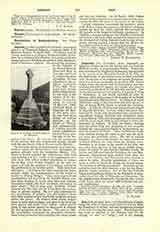

Damietta (Gr. Tamiathie, Arab. Doumidt), an Egyptian titular see for the Latins and the Catholic Melchite Greeks, in Augustamnica Prima. Damietta, first mentioned by Stephanus Byzantius, was situated at the mouth of the Phatnitic branch of the Nile, on the right bank; its prosperity seems to have coincided with the decline of its religious metropolis Pelusium. Only four bishops are known, from 431 to 879. Under Caliph Omar the Arabs took it by treachery and successfully defended it against the Greeks who tried to recover it, particularly in 739, 821, 921 and 968. The Arabs also repulsed several attacks of Amaury I, King of Jerusalem. It was finally captured by Jean de Brienne, 1219, after a siege of 15 months; of its 70,000 inhabitants only 3000 survived. St. Francis of Assisi visited the camp of the crusaders and went thence to that of Sultan Malek Kernel to preach the Christian Faith. In 1221 the Franks were defeated and obliged to abandon the town. In June, 1249, it was again captured by St. Louis, who transformed into a church the magnificent mosque El-Fatah and established there a Latin bishop, Gilles; but having been taken prisoner with his army, April, 1250, he was obliged to surrender Damietta as ransom. In 1251 the Sultan, hearing that the pious king was preparing a new crusade, ordered the town and its citadel to be destroyed, except the mosque El-Fatah. Later on fishermen built their shelters among the ruins; in this way the modern town has gradually arisen. The site of ancient Damietta is erroneously placed by some historians at Esbeh el-Bordj, six miles from the modern town. Damietta is no longer at the mouth of the Nile, but ten miles from the sea; it has about 53,000 inhabitants, of whom 75 are Catholic Melchite Greeks, 60 Latins, and 250 non-Catholic Christians, the rest Mussulmans. Franciscans have resided there since the time of St. Francis, and Franciscan nuns conduct a school for girls. Wealthy inhabitants of Cairo are wont to retire to Damietta during the heated season. The harbor is of little importance. Damietta is also, probably since the fifth century, a see for the Monophysite Copts; moreover, one of the non-Catholic Greek metropolitans subject to the Patriarch of Alexandria bears the title of Pelusium and Damietta. In the neighboring Mansourah, famous for the victory of St. Louis, there are about 1000 Catholics and several institutions.
S. VAILHE

